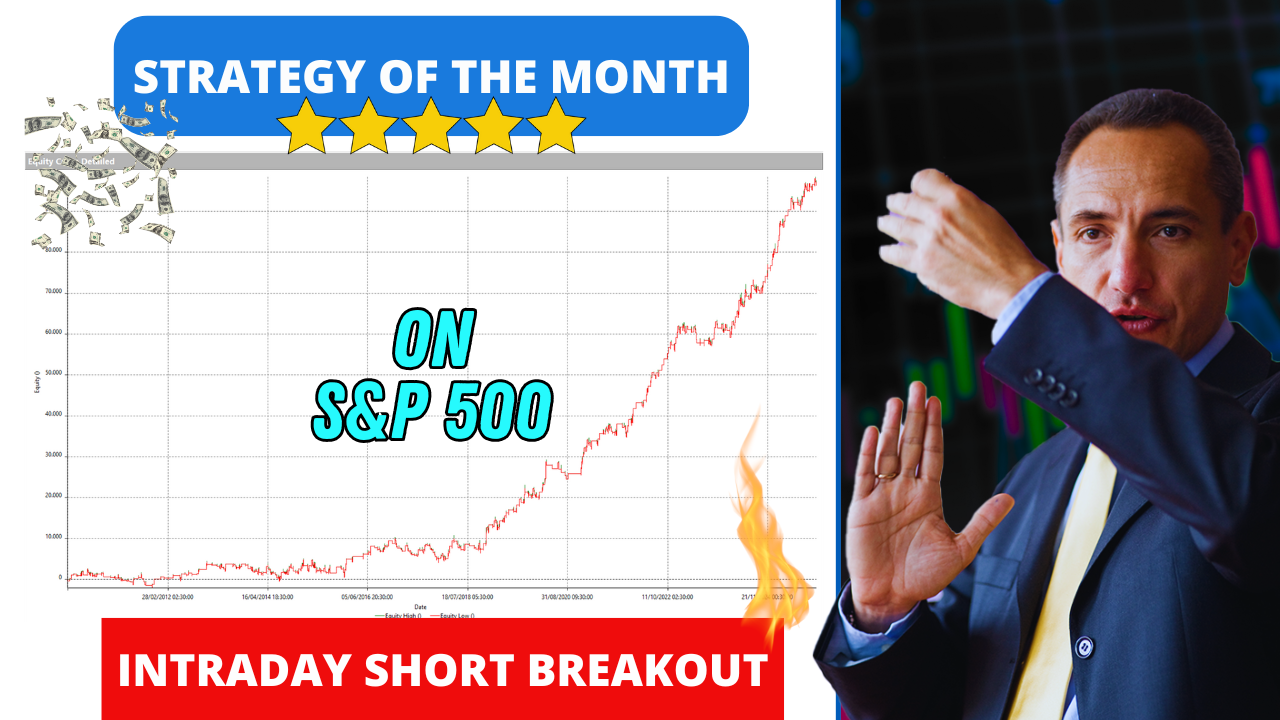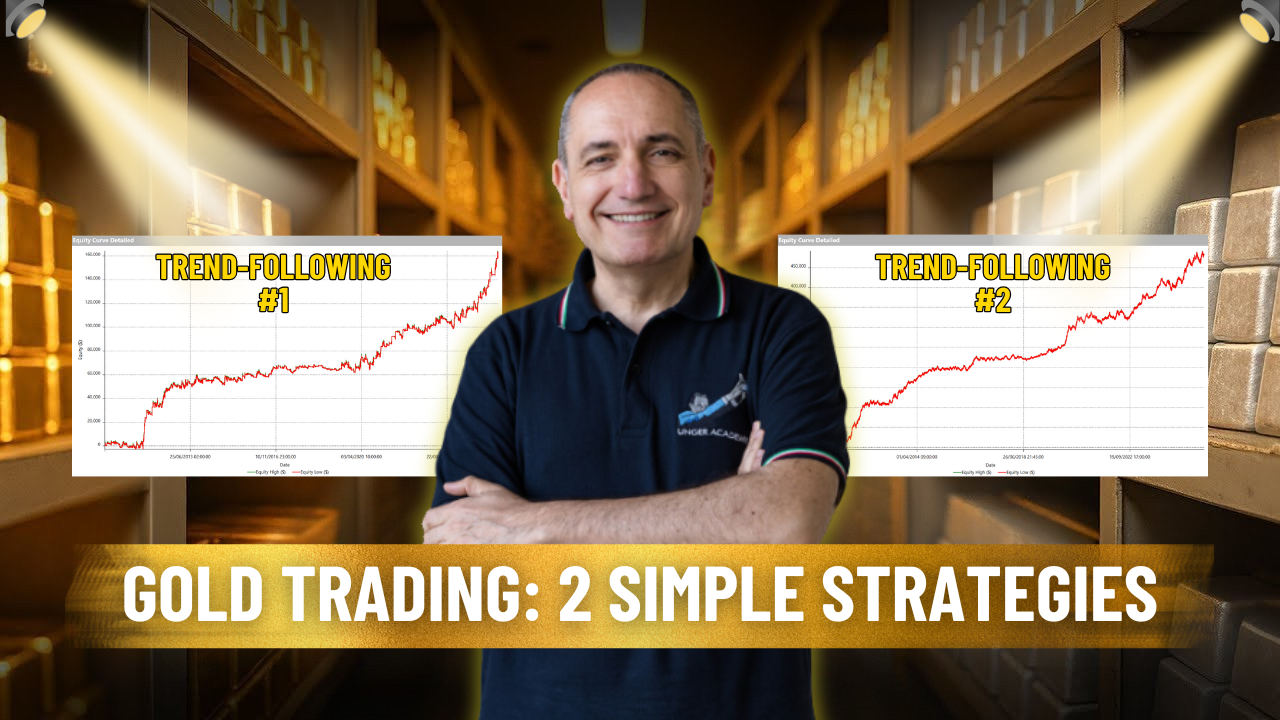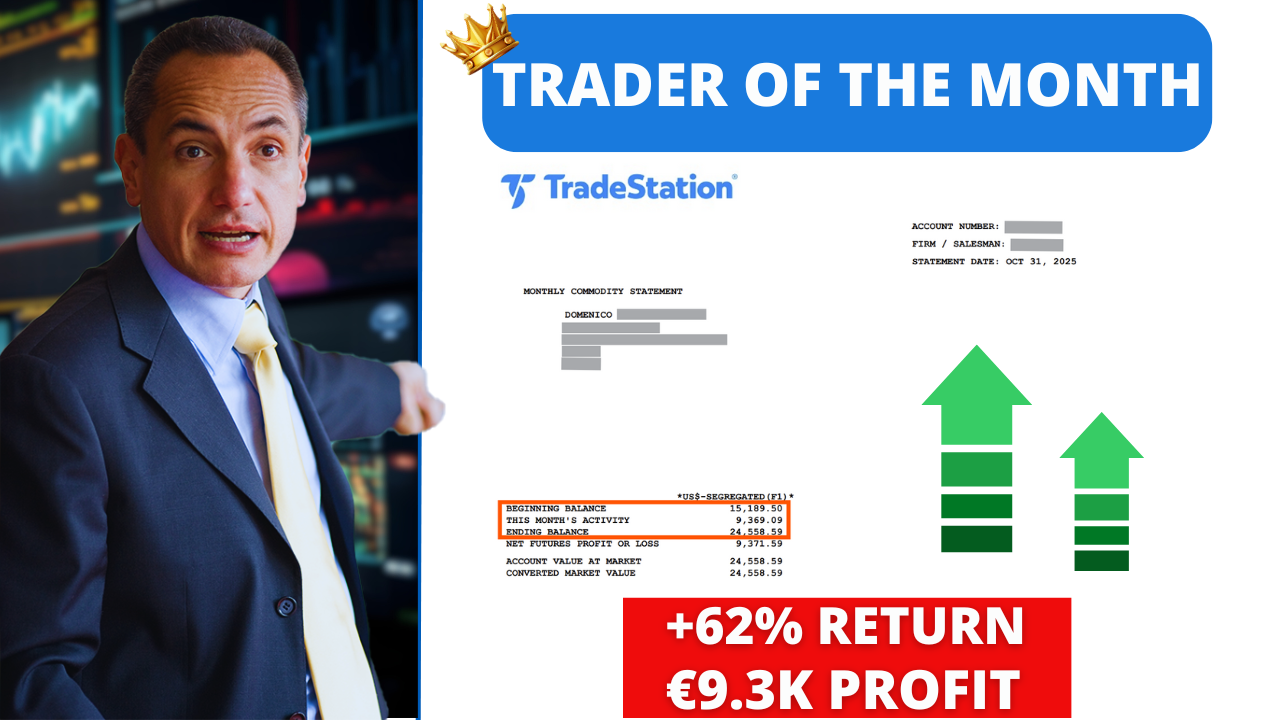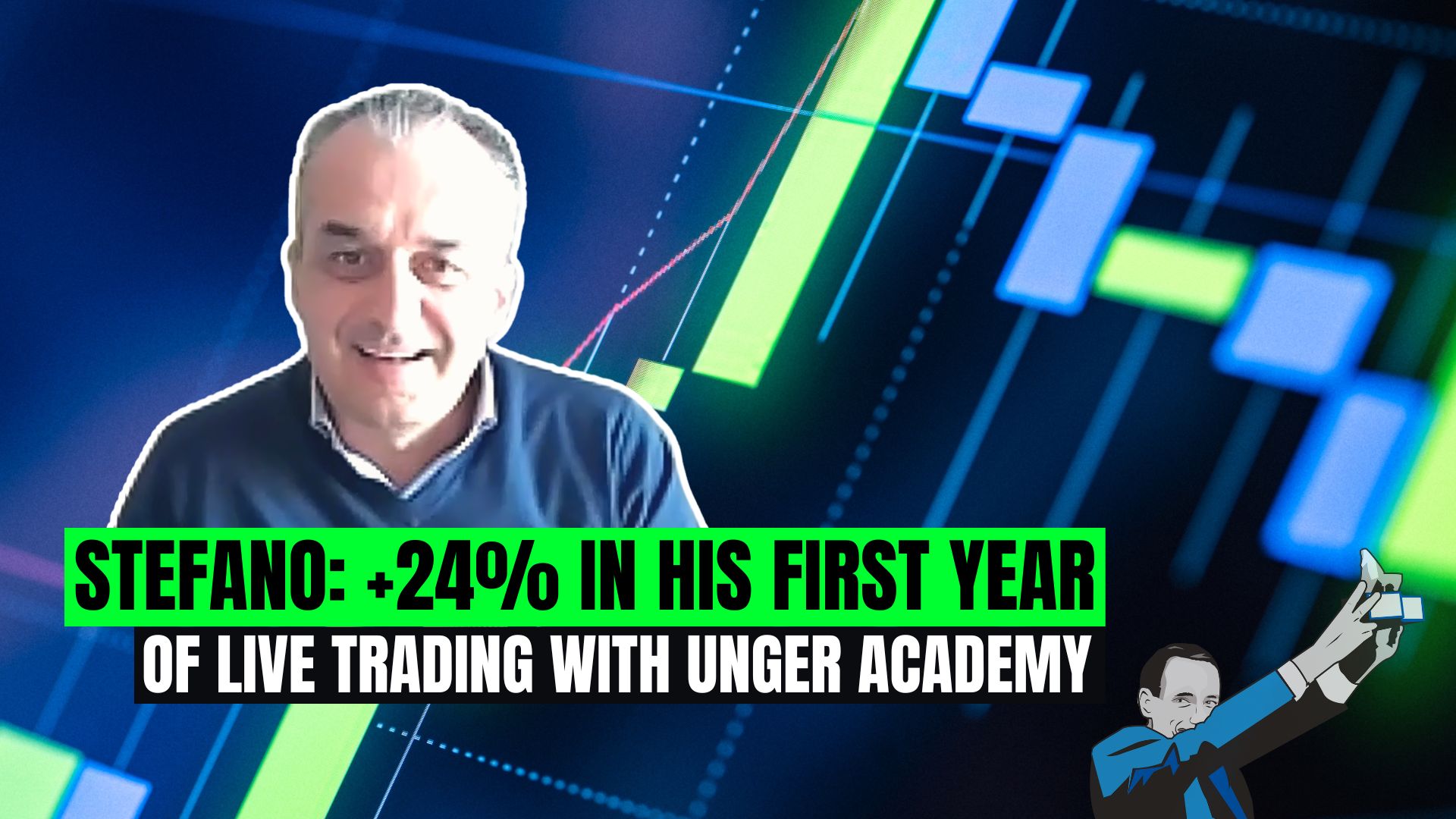Introduction: The Concept of Simplicity in Systematic Trading
What is the absolute simplest trading strategy? And what do we mean by simple? Simple in its logic and in its construction, but also—and above all—simple to follow when you go live with real money.
And again: is the absolute simplest trading strategy also the one that could commonly be considered the most intuitive and straightforward?
We’ll try to answer this and other questions in this video by analyzing and comparing the main types of logic used in the trading world, aiming to examine the pros and cons of each one.
Trend Following: Riding the trend until the end
Let’s start right away with the first one: a trend-following strategy. It’s certainly one of the most famous approaches. Trend following means following the existing trend and riding it until it’s over. These strategies are particularly suited to markets that tend to trend. A typical example of a market suited to this strategy is commodities, especially certain ones. In fact, they have the characteristic that once a trend is established, they tend to maintain it longer than other markets.
Breakout Strategies: Trading based on price breakouts
The second type: breakout strategies. These are still part of the broad family of trend-following systems because, in this case too, you go along with the ongoing trend. However, unlike pure trend-following strategies, breakout strategies focus on breakouts—specific price levels that act as support and resistance.
These could be, for example, the highs or lows of the previous session, or the highs or lows of the current session, or even certain volatility channels. Regardless, once those levels are broken with strength and volume, you follow the trend in this scenario as well and go along with it. Generally, these are systems that operate in the short term, often intraday.
Mean Reverting: Prices returning to the average
The third type: mean-reverting strategies. The idea behind this approach is that every price movement, whether up or down, will eventually return to its mean, as if the market moved in a zigzag pattern. Following this logic, you enter positions at what are known as reversal points—specific support and resistance levels—waiting for the market to revert to its mean. The classic example of markets where this approach works is the American stock indices.
Practical Examples and Strategy Comparisons
But let’s look at some practical examples that summarize the concepts we’ve just covered, so we can have a clearer picture. To do this, we’ll apply this simple script in which we see the three different types of strategies mentioned previously, each with an entry method that identifies it.
In the case of the trend-following approach, with the TF input, we enter positions based on a simple price channel built on the highs and lows over n periods. This is a typical indicator commonly used to build trend-following strategies. We’ll use it to calculate our entry levels. Essentially, when prices hit the upper band of the channel, we’ll go long. Conversely, when prices reach the lower band of the channel, we’ll go short.
Now, moving on to the second strategy. With the MR input, we identify the mean-reverting strategy. In this case, we decided to use the classic previous session’s high and low—so highS1 and lowS1. These will be our entry levels. Therefore, we’ll go long at the previous session’s low and short at its high.
The third input, BRK, identifies the breakout strategy. Here, we use the same levels used for the mean-reverting approach—so the previous session’s high and low—but in the opposite way compared to before. In other words, we’ll go long when the previous session’s high is broken and go short when the previous session’s low is broken.
In the case of the mean-reverting and breakout systems, we also plan to exit at the end of the session, effectively making both strategies intraday. This differentiates them from the first trend-following strategy, which, as we noted at the beginning, usually has a longer-term scope.
I also want to emphasize that this is just study-purpose code, so it’s definitely not something you could use live, nor is it a fully developed, finalized strategy.
Market Analysis for Each Strategy
Now let’s move on to our Portfolio Trader, where we have three baskets of instruments. The top one and the third one represent futures with more typically trend-following characteristics—in other words, classic commodities.
Meanwhile, the second basket represents mean-reverting strategies, with the US stock indices Mini S&P and Nasdaq, as well as the 10-year US Treasury bond future. We know these instruments have historically responded well to reversal-based approaches.
Regarding the trend-following strategy—the one at the top—we’ll use a 1440-minute timeframe, which is essentially daily, and we’ll go long or short on the breakout (as we saw earlier in the code) of a channel built on the last four days, since these are daily bars.
We also added a monetary stop loss of $2,000 so the trade can be closed that way without having to wait for the position to reverse—meaning for the opposite band of the channel to be reached—whenever the trend turns around and starts going against us.
In the other two strategies, however, we close the position, whether at a loss or a gain, at the end of the session.
Pros and Cons of Different Strategies
Looking at the equity curve of the first strategy, the trend-following one, we immediately see a rising line. So indeed, these futures react well to this kind of logic. What distinguishes this type of system is the idea of riding the trend for as long as possible or until prices show signs of a reversal. In fact, if we look at the trade list, we’ll see trades generally last a few days or weeks. For instance, one of the longest trades was on Orange Juice, lasting several months, because the trend on that instrument was particularly strong.
Another aspect that sets trend-following strategies apart is the usually substantial average trade, given the low total number of trades, and the drawdown, which may increase in years when prices move sideways—meaning in the absence of a clear trend.
Here in this chart, as an example, we’re looking at the Gold future. We can see the price channel we use to calculate our entry levels, and here we have a classic example of entering a long trade when prices begin to rise and touch the upper channel. The trend then remains strong, and we keep the position open until that trend weakens and reverses, causing us to close out and open a short position.
Now let’s move on to the second strategy, the mean-reverting one, which works on a 60-minute timeframe. As you can see, the system here shows a much more regular equity curve than the previous one. However, if we take a closer look—especially at the S&P—it’s mainly the short side that’s causing damage to our performance.
This is somewhat characteristic of mean-reverting strategies. In fact, it’s very, very difficult to go short with this type of logic on stock indices. That’s why people generally tend to sideline that type of operation, focusing more often on the long side, which typically yields much better results.
What does the long side show us, exactly? It shows that this type of logic usually works well, producing a decent equity curve for much of the time. But then, fairly significant drawdowns can occur, like the one you see here—significant and, above all, very fast—due to drops in the stock markets, essentially corrections of various depths. In this case, it’s 2022, when the markets fell sharply, especially in the first six months of the year.
If you think about it, the underlying logic is to buy low and sell high, which is pretty much what might come intuitively to everyone when talking about financial instruments. I buy something at a low price and sell it at a higher price, making a profit. In reality, as you’ve probably gathered, in mean-reverting systems, this approach works well most of the time, but because it’s counter-trend trading, there’s a risk of running into sudden drawdowns. It’s important to be aware of that. This is precisely why it’s necessary to have a set of conditions or filters in place to limit these situations.
Additionally, by their nature, mean-reverting systems generally require slightly wider stop losses than trend-following strategies. That’s because, when opening positions against the trend, you need to give the trade a bit more time before the reversal takes place, hoping the trade will eventually turn profitable.
Again, let’s examine a chart on the Mini S&P 500 in detail. For instance, we see this long entry triggered at the previous session’s low, shown here by the yellow indicator, followed by the subsequent price rebound, taking the trade into profit by the session’s end.
Now let’s move on to the third and final type of strategy: breakout systems. Here too, the timeframe used is 60 minutes, and once again, we’re dealing with an intraday strategy. Its equity curve is definitely the most regular and appealing of the three we’ve seen, although we should note that once again we’re talking about an unfiltered equity curve. Still, it serves as a basis for our discussion.
Breakout systems, as a reminder, capitalize on strength, on the breaking of certain levels in the direction of the trend. So, from a psychological standpoint, it can be much simpler to follow them live compared to mean-reverting systems. It’s one thing to go long while the market is rising, and quite another to go long while it’s falling. The same applies, in reverse, for short positions. Another undeniable advantage is that you can afford relatively tight stops precisely because you’re trading with the trend on short-term momentum moves. Put simply, if the breakout fails, you can close out the trade with a stop loss that isn’t far from the entry point.
Once again, let’s look at a specific underlying asset, namely the Gasoline future—known for its volatility and explosive movements, which align perfectly with a breakout approach. As an example, consider this short position initiated at the break of the previous session’s low, shown by the yellow line, followed by the short-term trend continuing until the session’s end.
In conclusion, summing everything up, I would say that based on what we’ve seen so far, the classic trend-following system is strong in its simplicity and in the fact that it genuinely follows the underlying trend. The trade-off is that it’s a slower style of trading, and you spend much more time in the market compared to the other approaches.
Mean reverting is undoubtedly interesting because it takes advantage of an intrinsic quality of some markets. However, it must be properly calibrated and developed to deal with stock index corrections, which can indeed pose real problems for this type of strategy.
Lastly, we have breakout, whose various advantages we’ve just discussed—coming from its simplicity, its relative ease of real-time management from an emotional standpoint, and the fact that it suits shorter-term strategies very well.
Which Strategy is Truly the Simplest?
So, having arrived at this point and having analyzed the pros and cons of each approach, we can name the simplest strategy. In our opinion, the breakout strategy could be considered the absolute simplest in terms of both logic and real-money use. It’s probably not the most intuitive, for the reasons we mentioned earlier, but it’s definitely the recommended approach to start with, especially for novice traders.
Conclusions and Resources for Further Learning
If any of you are interested in the world of systematic trading, I invite you to click the link in the description. There, you can watch a webinar by Andrea Unger, or get our best-selling book “The Unger Method” by paying only for shipping, or even schedule a free call with a member of our team.
If you enjoyed the video, please leave us a like, subscribe to our channel, and click the bell so you always stay up to date. That’s all for now. Thanks for watching, and happy trading to everyone.







